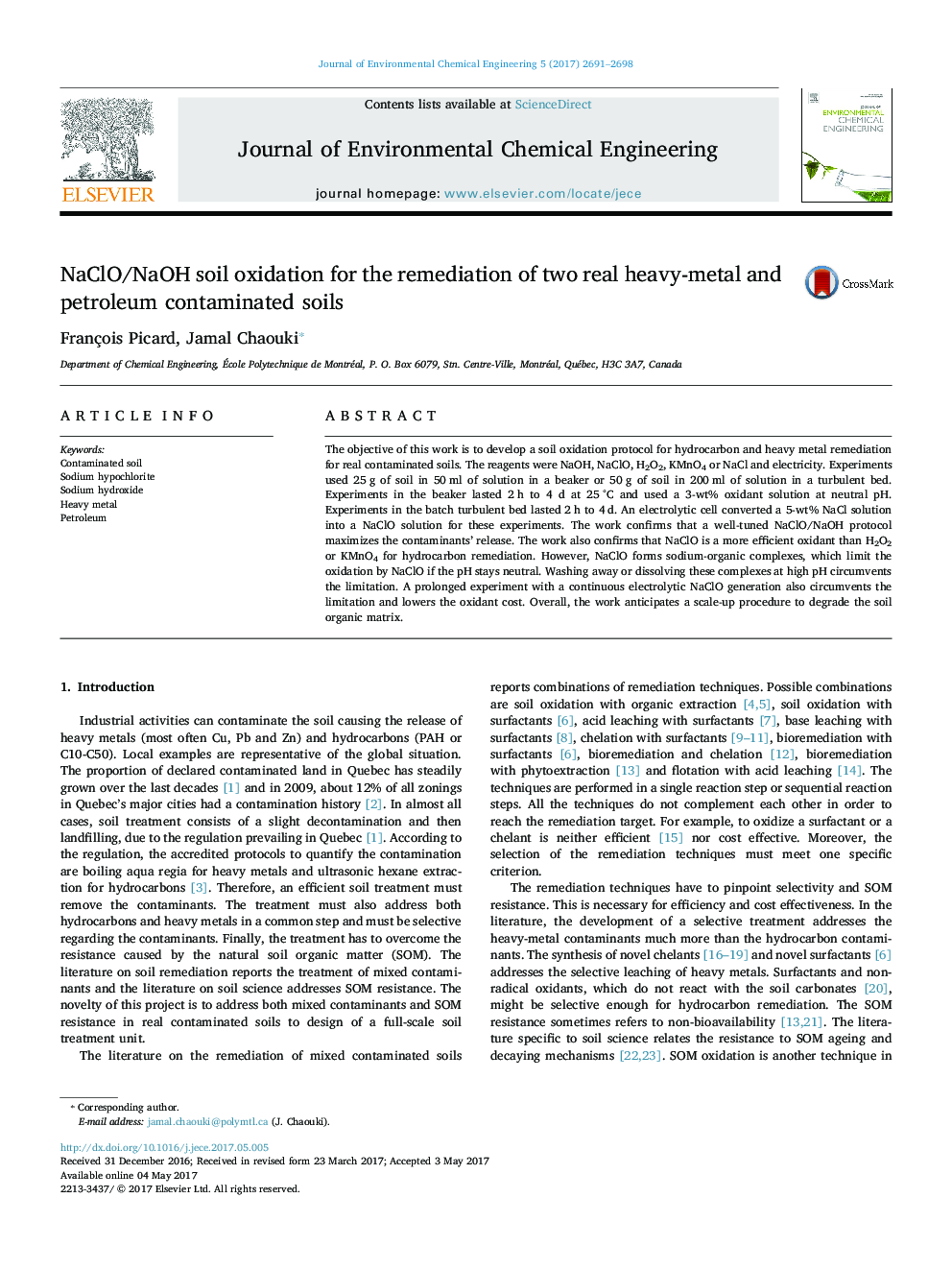| کد مقاله | کد نشریه | سال انتشار | مقاله انگلیسی | نسخه تمام متن |
|---|---|---|---|---|
| 4908413 | 1362578 | 2017 | 8 صفحه PDF | دانلود رایگان |

- NaClO is more efficient than H2O2 or KMnO4 for oxidizing hydrocarbon contaminants.
- NaClO is comparable to NaOH for dissolving soil organic matter.
- In-situ generation of electrolytic NaClO minimizes the oxidation cost.
- Sodium organic complexes limit the soil oxidation by NaClO.
- Soil oxidation minimizes chelant loss.
The objective of this work is to develop a soil oxidation protocol for hydrocarbon and heavy metal remediation for real contaminated soils. The reagents were NaOH, NaClO, H2O2, KMnO4 or NaCl and electricity. Experiments used 25 g of soil in 50 ml of solution in a beaker or 50 g of soil in 200 ml of solution in a turbulent bed. Experiments in the beaker lasted 2 h to 4 d at 25 °C and used a 3-wt% oxidant solution at neutral pH. Experiments in the batch turbulent bed lasted 2 h to 4 d. An electrolytic cell converted a 5-wt% NaCl solution into a NaClO solution for these experiments. The work confirms that a well-tuned NaClO/NaOH protocol maximizes the contaminants' release. The work also confirms that NaClO is a more efficient oxidant than H2O2 or KMnO4 for hydrocarbon remediation. However, NaClO forms sodium-organic complexes, which limit the oxidation by NaClO if the pH stays neutral. Washing away or dissolving these complexes at high pH circumvents the limitation. A prolonged experiment with a continuous electrolytic NaClO generation also circumvents the limitation and lowers the oxidant cost. Overall, the work anticipates a scale-up procedure to degrade the soil organic matrix.
Journal: Journal of Environmental Chemical Engineering - Volume 5, Issue 3, June 2017, Pages 2691-2698